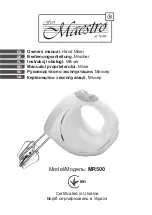
10
Sensor Troubleshooting
Cleaning Fuel Contaminated Discriminating Sensors
10-2
3. Damaged wiring insulation exposing bare conductors to moisture in the conduit. This condition may also
appear as readings showing lower than normal or the same reading, regardless of the state of the sensor.
4. Moisture causing the sensor wiring to short to the conduit. This can become evident after rainy wet weather or
flooding. Measuring the resistance with a standard volt-ohm meter may not identify a short due to moisture.
5. Connect the sensor directly to the console to determine if the reading is still unstable. If it stabilizes, the
problem is between the console and the sensor. If fluctuation continues with the sensor connected directly to
the console, change the sensor.
Cleaning Fuel Contaminated Discriminating Sensors
DISCRIMINATING SENSORS 794380-320, -322, -350, -352
Sensors exposed to gasoline should be removed from the pan or sump, dried off, and be allowed to recover in a
well-ventilated area for up to 7 days. Note: recovery time will vary depending on the ambient temperature and how
long the sensor was exposed to fuel. Sensors exposed to diesel fuel must be soaked in Coleman® fuel for 30
minutes and be allowed to recover in a well-ventilated area for up to 7 days.
DISCRIMINATING SOLID-STATE SENSOR - OPTICAL (P/N 794380-343, -344)
To clean contaminated optical sensors, dip the sensor into a small container of alcohol and briefly swirl it around to
rinse it off.
Sensor Troubleshooting
COMM ALARMS
1. The console cannot reliably communicate with the sensor. This could be caused by a poor wiring connection,
faulty sensor, faulty USM module, or an electrically noisy line.
2. Connect the sensor directly to the console to troubleshoot field wiring, noisy line issues. If unit is ok, check
wiring connections, wire conductivity, etc., to isolate the problem.
MAG SENSOR
1. Verify threshold parameters entered during setup for this sensor are correct.
2. Following the alarm upgrade delay period, if enabled, any designated Fuel, Water, High Liquid, and Low Liquid
‘warnings’ will change to ‘alarms’ - even if the liquid in the containment area is only at the warning level.
3. For a Sensor Fault Alarm the console is reading the Mag Sensor, but the readings are unstable. The problem
could be the sensor itself (float missing, bad probe, etc.) or electrical noise on the line (similar to effects on
mag probes).
4. An Install Alarm is posted if the Mag Sensor is not firmly resting on the bottom of the monitored pan/sump.
Check that the sensor is installed correctly.
















































